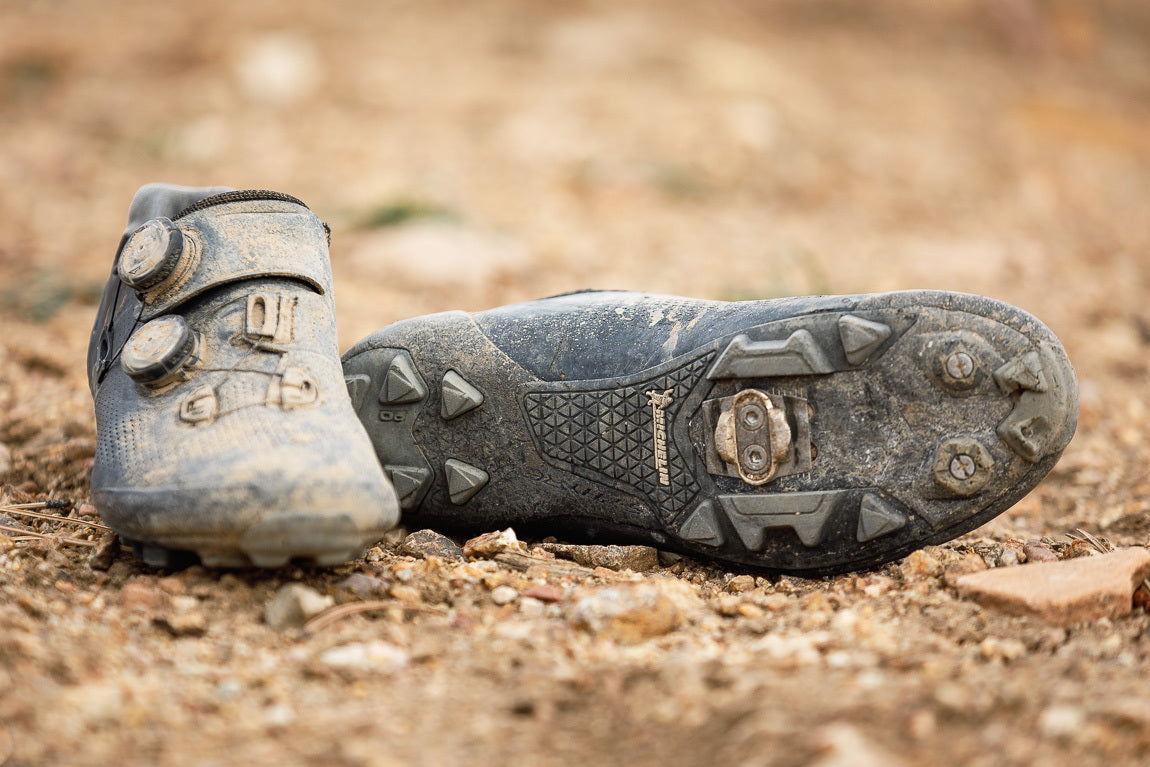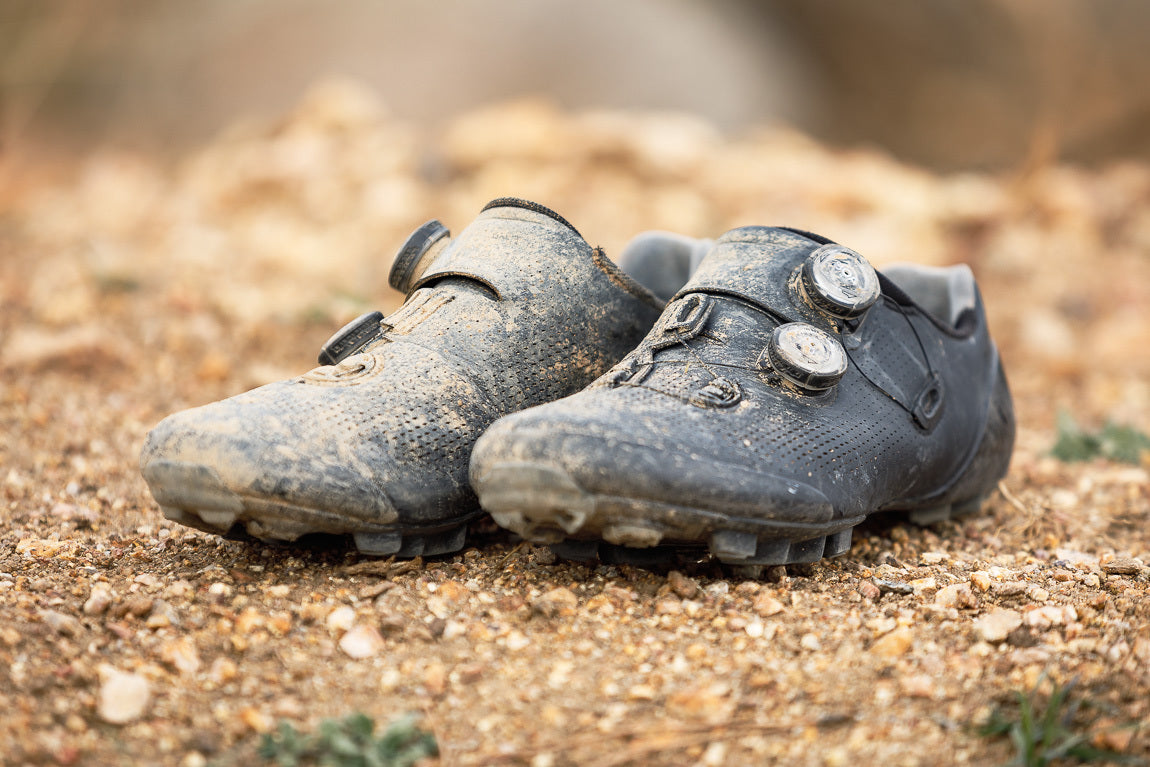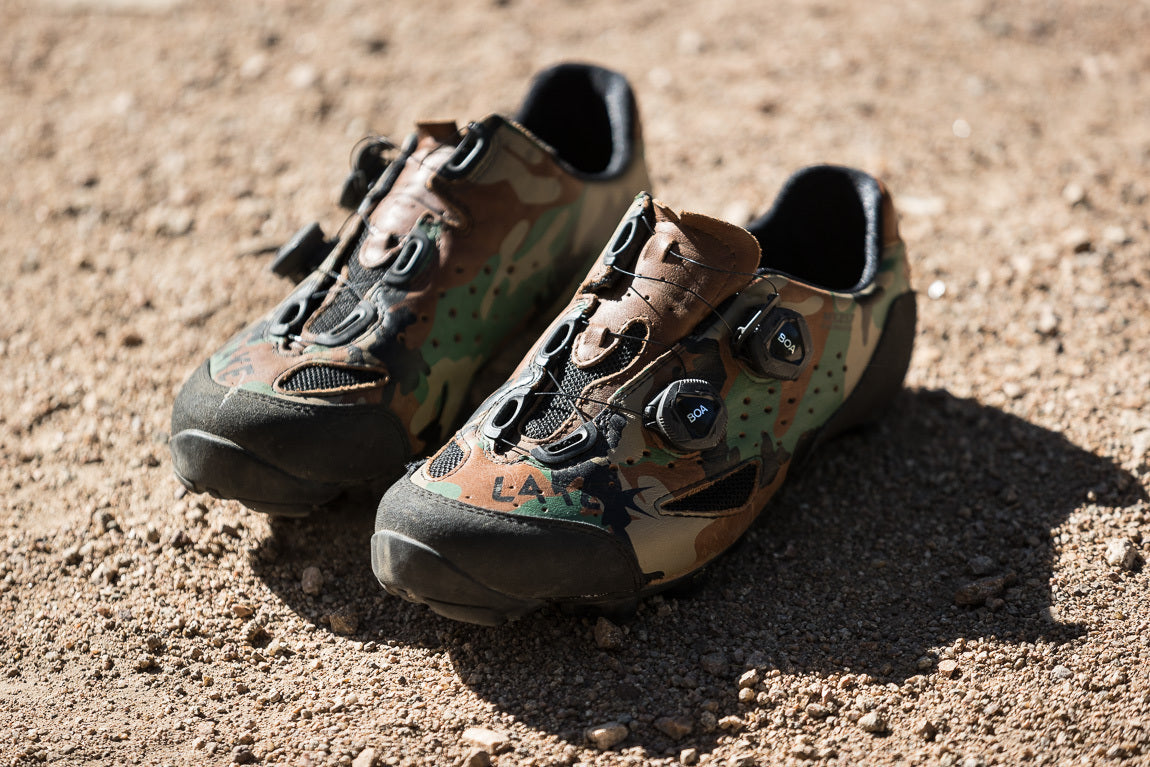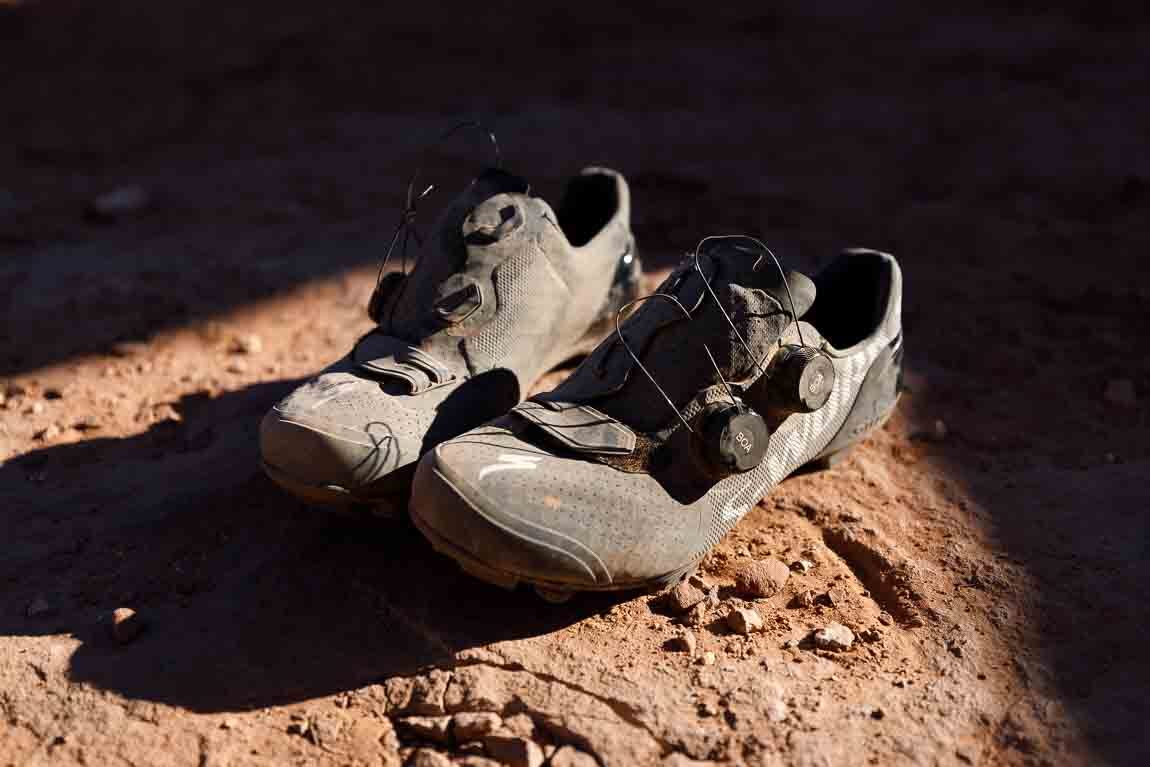I really hope you aren’t as picky as I am. I hope you haven’t had to pull off your shoes mid-ride to give your bony heels a break. I hope you haven’t had to completely loosen your shoe dials to get circulation back to your toes. I hope you haven’t tried 10+ different shoe brands to find the right one.
Well, I have. And maybe, my experience can help you find the perfect shoe for mountain biking and gravel.
The problem is that mountain bike shoes are asked to do a lot of things. While road shoes are designed for consistent pedaling cadence, smooth terrain, and practically no walking, the demands go much further for a mountain bike shoe.
Most cross-country mountain bike shoes are expected to be nearly as stiff as road shoes. They also have to hold your feet securely enough to avoid blisters and discomfort on rough terrain. Plus, it’s common to get off and walk when you’re on a mountain bike ride (unless you’re unbelievably skilled). Gravel riding is perhaps not as extreme, but it is still demanding. Usually, gravel riders opt to wear cross-country MTB shoes for maximum versatility.
In my quest to find the right pair of shoes, I’ve realized there are a few key features that work well for me. Shoes are personal, so don’t assume your feet face the same challenges as mine. However, I think these general traits can apply to most riders’ needs.
1. A sole that is stiff, but not too stiff
Naturally, sole stiffness plays into a shoe’s walkability. More importantly, I have found it can impact overall comfort while you're riding — which is the majority of the time unless you have to hike your bike a lot on your local trails or you’re on an epic adventure. For instance, I found the Specialized S-Works Recon shoe to be simply too stiff for my sensitive feet. I’d end up with numb toes on long gravel rides — not what you want bothering you at mile 60 of a 100+ miler.
On the other hand, Rapha’s Explore shoe doesn’t have such a stiff sole. Maybe I am sacrificing a bit of pedaling efficiency without a race-spec carbon sole, but the comfort trade-off seems worthwhile. Even though the Rapha Explore is billed as a gravel shoe, it would do well on XC mountain bike rides.
If you don’t want to test hundreds of shoes like me, look for brands that describe how stiff their different shoe models are, or those that provide convenient stiffness ratings. If you’re comparing sole materials, nylon soles found on entry- to mid-level shoes are less stiff and more comfort-focused than most high-end carbon soles.
2. The right amount of room in the toe box
There was a time when I thought smaller was better when it came to shoes. I crammed my feet in for that stripped-down “race” feel. Maybe a younger version of myself could handle that, but these days, narrow shoes just hurt my toes. I had a snazzy red pair of Mavic Crossmax SLs. I really wanted to like them. But the forefoot was far too narrow for my feet. This is a common trait among European shoe manufacturers. I’ve experienced this fit issue with Fizik as well.
Across road and mountain bike shoes, I’ve found Shimano has the most generous forefoot. It’s gotten to the point where I only wear Shimano shoes, but more on that in a minute. Lake is another option for wider shoes.
3. Ample heel cup padding
The final key to comfort I’ve found is in the heel cup. Unlike a day on the road, mountain biking puts more stress on your heels, especially on rides with extended descents. One element of good descending technique is a heels-down foot position while coasting with level cranks. This helps keep your weight low and lets your legs relax to absorb bumps. It has a knock-on effect of putting more of your weight into the heels. I found that my bony heels were often irritated by stripped-down shoes with minimal padding, another downside of the S-Works Recon shoes.
Bontrager and Giro shoes usually have plenty of padding in the heels to keep me comfortable. Also, I’ve found that second-tier shoes (not top-of-the-line race shoes) often have more heel padding — more comfort for less money … bonus!
So those are my three keys to comfort — but what shoe did I pick?
Shimano S-Phyre

For at least a year now, I’ve been happily wearing Shimano’s XC9 S-Phyre race shoe for cross-country mountain bike and gravel rides. This top-of-the-line shoe checks all the boxes for me. The sole is very stiff, but I think it’s tuned a little bit for off-road terrain. The two BOA dials are trouble-free and offer precise micro-adjustment. My feet are totally happy with the amount of forefoot room and the generous heel cup that has a decent amount of padding.
My only complaints are that this shoe is almost too stripped-down for all-around riding. It is a race shoe after all. When mine finally wear out, I might opt for an XC7 instead, which isn’t quite as stiff as the XC9.
Here are some other thoughts on shoes that work, from my coworkers here at TPC:
Bruce's pick: Lake MX237 Endurance Wide
I rode Giro shoes for years, and always experienced hot spots on the outer edge of my feet during hard efforts and long rides. Like Spencer, I crammed my feet into these narrow shoes and just dealt with it. But as my riding goals transitioned toward ultra-endurance events, I started worrying more about the discomfort.
I have absurd EE-width feet with very skinny heels and ankles. It was tough to find shoes wide enough to accommodate the width of my forefoot while maintaining a secure fit at the back of the shoe.
Then I found Lake shoes. The “Wide” version of the MX237 mountain bike shoe (recently replaced with the MX238) is properly wide. Shimano shoes are close, but I haven’t found anything that feels as wide as my Lakes. They actually support the outside edges of my feet.
Unlike Spencer, I like really stiff soles. I don’t like my feet to bend or flex. It needs to be totally solid for me to feel comfy. The Lakes use a carbon sole that delivers the high stiffness I’m looking for.
The shoe is made with full-grain leather, and once it broke in (it took a few rides) the heel went from feeling a bit loose to feeling molded to my foot. I haven’t had foot pain in months. I’m so impressed with the comfort that I even ordered matching road shoes, Lake’s CX238.
The “Endurance” version of the MX237 shoe also has some abrasion resistant panels to protect my foot and the shoe when I inevitably crash my bike. The camo colorway… it’s an acquired taste. Fortunately, Lake has plenty of good color options.
Reese's pick: Specialized S-Works Recon

I’ve been told that if you like Specialized S-Works shoes, you probably won’t like any other shoe. And while I was skeptical at first, I think this might be the case, at least for my subject group of one (Me). I wear a size 38.5 (7.5 womens). I have low arches and feet of slightly different sizes. Otherwise they’re average — not super narrow or wide, nor do they require high-volume shoes.
My first pair of mountain bike shoes was the S-Works XC shoe in 2016. I loved that shoe with its stiff-as-cement sole and heel cup that fit my achilles perfectly. I wore a 39 in the 2016 version. I wear 38.5 in the current S-Works Recon shoe. I use the Blue Specialized Body Geometry footbeds insert to provide better support to my arches. I don’t experience any wiggling or sliding around in the shoe. My foot feels secure and there isn’t noticeable flexing when I stand or sprint.
I enjoyed, rode, and destroyed the Shimano RX8 gravel shoe. That’s a close second to the S-Works. It met most of my criteria: tight heel cup and tall toe box with a footbed that was durable and substantial. I wished that it had a two-Boa system like the Recon. However, the outsole and midsole came up short. I encountered some hike-a-bike sections on a recent high Alpine gravel ride. After, I noticed that the carbon on the bottom of my RX8 was peeking through the rubber that was supposed to protect it. Beefier rubber soles would be an improvement.

